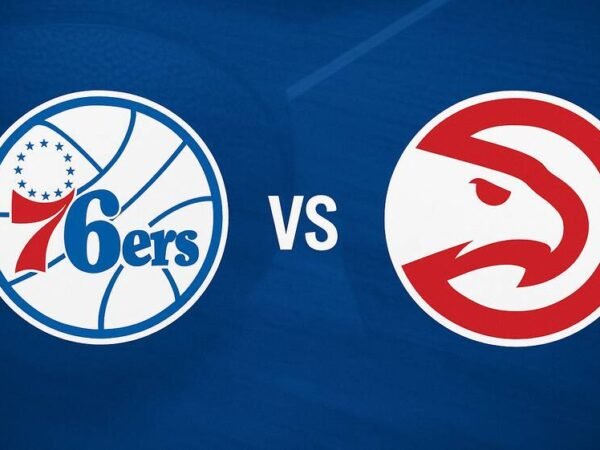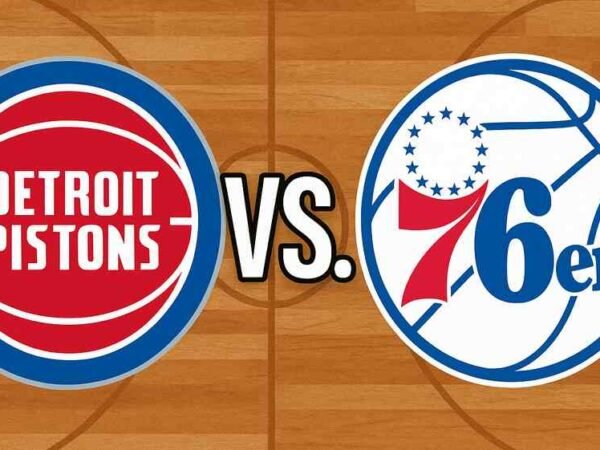The matchup between the Minnesota Timberwolves and the Golden State Warriors has become a thrilling rivalry in the NBA, with both teams bringing their best players and strategies to the court. The excitement of seeing stars like Stephen Curry, Rudy Gobert, and Karl-Anthony Towns compete head-to-head creates memorable moments in each game. Understanding the critical statistics of these matchups helps fans and analysts get a better picture of how the games unfolded, which players dominated, and each team’s strengths and weaknesses. This article will explore the Timberwolves vs Golden State Warriors match player stats and analyze the standout performances, team comparisons, and key defensive plays defining their most recent matchups.
Key Performers in the Match
The Timberwolves and the Warriors have rosters filled with talented players capable of changing the game. In their recent contests, several key players emerged as top contributors.
Stephen Curry: The Warriors’ Offensive Maestro
Stephen Curry is always the focal point when discussing the Warriors. As one of the greatest shooters in NBA history, Curry’s ability to take over games is undeniable. In the Timberwolves vs. Warriors games in 2024, Curry was once again at the forefront, consistently delivering high-scoring performances. Across their recent meetings, he averaged 32 points per game, hitting multiple three-pointers with remarkable efficiency.
Curry’s ability to stretch the defense with his long-range shooting created opportunities for his teammates, as the Timberwolves were forced to adjust defensively to contain him. His playmaking was also on display, with an average of 7 assists per game, feeding off the extra attention he drew. Despite his stellar offensive numbers, the Warriors still struggled to secure victories, as the Timberwolves’ defense and rebounding made it difficult for them to control the game.
Karl-Anthony Towns: The Timberwolves’ Towering Scorer
Conversely, Karl-Anthony Towns was a force to be reckoned with for Minnesota. Known for his versatile scoring ability, Towns delivered some of his best performances against the Warriors. His size and skill allowed him to dominate inside the paint, while his ability to step out and hit three-pointers kept Golden State’s defense on its toes. Towns averaged 28 points in their recent games and grabbed 12 rebounds per game, making him one of the most impactful players on the floor.
Towns’ contributions were not limited to scoring. His rebounding helped the Timberwolves control the game’s tempo, particularly on the defensive end, where he and Rudy Gobert secured critical rebounds to limit Golden State’s second-chance opportunities. Towns also contributed defensively with blocks and altered shots, demonstrating his importance as a scorer and defender.
Rudy Gobert: Dominating the Paint
Rudy Gobert’s defensive presence was a game-changer in the Timberwolves vs. Warriors matchups. Gobert, one of the league’s best rim protectors, played a significant role in shutting down Golden State’s drives to the basket. His shot-blocking ability and rebounding were crucial in limiting the Warriors’ offensive production, particularly when Curry or Thompson attempted to attack the paint.
In their recent meetings, Gobert averaged 15 rebounds and 3 blocks per game, often altering shots and forcing the Warriors to settle for more difficult jump shots. Offensively, Gobert contributed efficiently, scoring around 14 points per game, mainly through dunks and put-backs, further highlighting his role as a dominant inside force.
Anthony Edwards: The Timberwolves’ Rising Star
Anthony Edwards has quickly become one of the most exciting young players in the NBA, and his performances against the Warriors reflected his growing influence on the Timberwolves’ success. Edwards contributed 24 points and 8 assists per game, showcasing his ability to score at all three levels—inside, mid-range, and from beyond the arc. His assists were a testament to his growing playmaking ability, as he created scoring opportunities for teammates like Towns and Gobert.
Defensively, Edwards’ athleticism allowed him to guard multiple positions, providing valuable help in slowing down the Warriors’ fast-paced offense. His energy and hustle were critical components of Minnesota’s overall game plan, and his development into an all-around player was evident throughout their matchups.
Team Stats Breakdown
When analyzing the Timberwolves vs Golden State Warriors match player stats, it becomes clear that specific team metrics played a significant role in the outcome of these games.
Shooting Percentages
The Warriors, known for their three-point shooting prowess, attempted 43 three-pointers per game. However, they struggled with efficiency, shooting just 33.1% from beyond the arc. This inconsistency hurt them in critical moments, as they relied heavily on long-range shots to fuel their offense. Despite Curry’s brilliance, Golden State’s inability to hit shots at a high clip from deep made it difficult for them to overcome the Timberwolves’ balanced attack.
On the other hand, the Timberwolves were more efficient in their shooting, connecting on 44.7% of their field goal attempts. While they didn’t rely on the three-pointer as much as Golden State, their ability to score inside and outside made them difficult to defend. Towns and Edwards played pivotal roles in their efficient offense. At the same time, Gobert’s inside presence provided high-percentage scoring opportunities around the rim.
Rebounds and Turnovers
One of the most significant differences between the two teams was their rebounding. Minnesota dominated the glass, out-rebounding the Warriors by an average of 7 rebounds per game. This advantage, particularly on the defensive end, allowed the Timberwolves to limit Golden State’s second-chance points and control the game’s pace.
In addition to their rebounding dominance, the Timberwolves did a better job of caring for the basketball. They forced the Warriors into an average of 15 turnovers per game, often leading to fast-break opportunities and easy baskets in transition. This combination of rebounding and forcing turnovers gave the Timberwolves more scoring chances and allowed them to dictate the flow of the game.
Defensive Impact
The defense played a crucial role in the outcomes of these matchups, with both teams showcasing different strengths on that end of the floor. For the Timberwolves, Rudy Gobert was the anchor of their defense, protecting the rim and disrupting the Warriors’ offensive rhythm. His shot-blocking and rebounding limited Golden State’s ability to score inside, forcing them to rely heavily on outside shooting.
Draymond Green, the Warriors’ defensive leader, was equally impactful for his team. Green’s ability to guard multiple positions and serve as a playmaker on offense was critical in keeping the Warriors competitive. In the recent matchups, Green averaged nearly a triple-double, with 10 points, 9 rebounds, and 8 assists per game. He also contributed defensively with his ability to switch onto both guards and bigs.
Despite Green’s efforts, the Warriors struggled to contain the Timberwolves’ balanced offensive attack. Minnesota’s ability to spread the floor and attack from different court areas proved too much for Golden State’s defense, particularly in critical moments late in the games.
Player Efficiency and Advanced Metrics
Several key trends emerge when diving deeper into player efficiency and advanced metrics. The Timberwolves’ effective field goal percentage (eFG%) was higher than the Warriors’, thanks to their balanced scoring and high-percentage shots inside. The Timberwolves also had a higher true shooting percentage (TS%), reflecting their ability to get to the free-throw line and convert.
Karl-Anthony Towns had one of the highest usage rates on the Timberwolves. Still, his efficiency remained strong, with a shooting percentage of over 50%. Despite his heavy offensive load, Stephen Curry continued to deliver with remarkable efficiency, particularly from beyond the arc. However, the Warriors’ reliance on Curry and inability to consistently get contributions from other players limited their offensive effectiveness.
Closing Thoughts
The Timberwolves vs Golden State Warriors match player stats reveal the intense competition between these two Western Conference teams. While Stephen Curry’s offensive brilliance kept the Warriors competitive, the Timberwolves’ balanced attack, rebounding advantage, and defensive prowess ultimately gave them the edge in recent matchups. Karl-Anthony Towns, Rudy Gobert, and Anthony Edwards were instrumental in Minnesota’s success, contributing on both ends of the floor and controlling key game moments.
As these two teams continue their rivalry, the Warriors must improve their shooting consistency and rebounding if they hope to turn the tide. Meanwhile, the Timberwolves have shown that they can compete with the best in the league, and their growth as a team suggests they will remain a formidable opponent in future matchups.
Do Read: Portland Trail Blazers vs Lakers Match Player Stats












